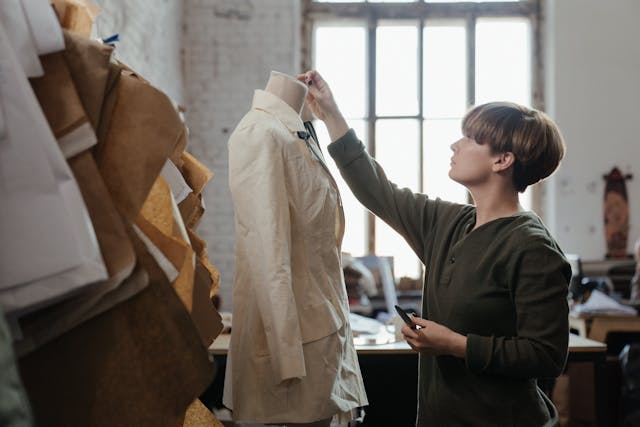
A combination of talent, imagination, and meticulous attention to detail is needed to create amazing apparel. Understanding fabric and style is only one aspect of the transition from basic to boutique; other skills include becoming an expert at personal flair, embellishments, and tailoring. Like any other creative form, fashion is a product of invention and a willingness to push limits. Regardless of your level of skill, the following guide will offer tips and ideas to turn your clothes from plain to exquisite, guaranteeing that every item you make is a work of art.
Recognizing the Potential of Fabric
The fabric is the cornerstone of any excellent article of apparel. The unique qualities and potentials of various textiles can significantly change how a garment feels and looks. Natural fibers such as wool, silk, and cotton provide comfort and breathability, whilst synthetic fibers such as spandex and polyester offer durability and stretch. Knowing these characteristics enables you to make well-considered decisions that improve the fit and style of your clothes. Your designs can gain depth and interest by experimenting with various fabric weights and textures. For example, combining a structured denim with a lightweight silk can produce a striking contrast that improves the overall look.
Acquiring Skill in Tailoring
Tailoring is the art and science of creating an individual garment from a flat piece of cloth. Precise measurements, cuts, and stitching are required to guarantee that the garment fits the wearer’s figure. Gaining proficiency in tailoring techniques like pleats, darts, and seams may greatly enhance the fit and quality of your clothing, giving it a polished, businesslike appearance. The key to great tailoring is meticulous attention to detail. To have a neat, elegant look, every stitch, hem, and seam must be done precisely. Your tailoring abilities can be further improved by making high-quality tool purchases and studying sophisticated methods like pattern drafting and fitting modifications.
Embellishments
The last details that give your clothes personality and flair are called embellishments. Be it lace, appliqué, or embroidery, these decorative features may turn an ordinary piece of clothing into a one-of-a-kind masterpiece. You can play around with colors, textures, patterns with embellishments and even rhinestone transfers to give your creations more depth and layers of intrigue. It’s important to balance the embellishments carefully so as not to overpower the outfit. Select decorations that enhance rather than detract from the overall look by going with the fabric and style.
Personalization
Customization is the best approach to make amazing clothes that express a person’s individuality and sense of style. By providing customization choices like made-to-order designs, bespoke sizing, and personalized monograms, you may meet the specific requirements and tastes of your customers. This degree of customization makes each outfit unique and customized to the wearer. In order to provide customers the flexibility to co-create their perfect outfit, customization can also include choices for fabrics, colors, and design aspects. This cooperative method develops a stronger bond between the consumer and the apparel and improves the customer experience. Your brand can go from being basic to boutique by embracing personalization and providing unique and significant products.
Ethical and Sustainable Practices
The importance of ethical standards and environmental responsibility in modern fashion is growing. Making conscious decisions that help the environment and the people working on the garments is necessary to create amazing apparel. This entails choosing eco-friendly textiles like recycled materials and organic cotton as well as making sure that fair labor standards are followed all the way through the supply chain. Designing classic items that last for years rather than fads that come and go is another aspect of sustainability. You may make apparel that looks excellent and lasts a long time by emphasizing quality and durability. Using zero-waste design strategies like fabric recycling and pattern optimization can also help you lessen the production’s environmental effect.
Conclusion
Making amazing clothes is an art that calls for a careful balance of imagination, talent, and decision-making. Basic clothing can be transformed into boutique masterpieces by grasping fabric, becoming an expert tailor, adding embellishments to give a personal touch, providing personalization, and being dedicated to sustainability. Every piece becomes a distinctive representation of style and artistry, showcasing the commitment and love that go into making it.


